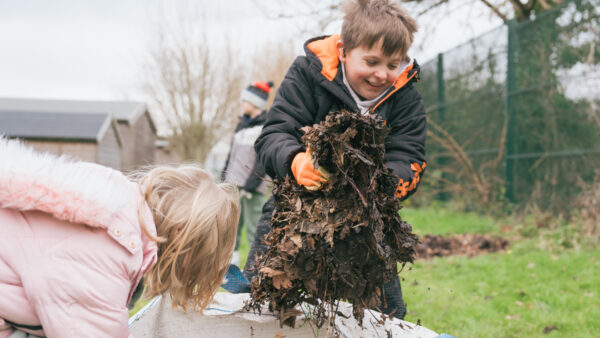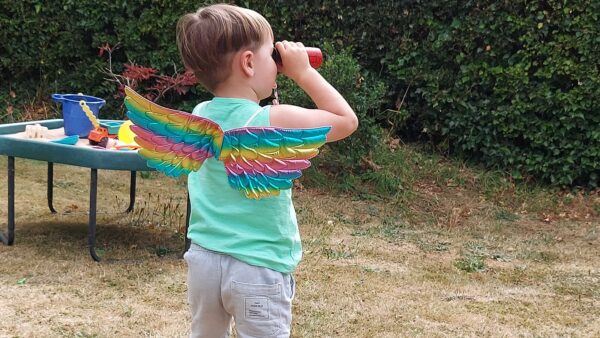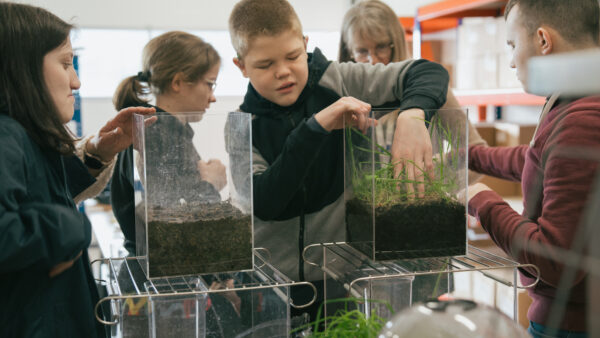An activity to map your journey around an outdoor space such as a park, woodland or even your own garden. Collect sensory nature as you travel and create a journey map.
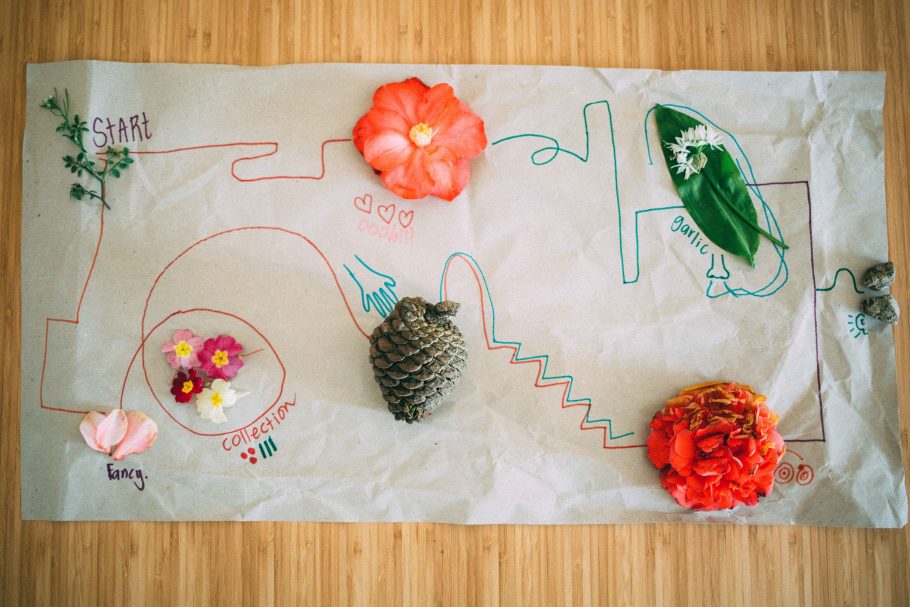
You will need
- Ten freezer bags or other small bags that you can collect natural materials in.
- Large piece of paper, pens.
What to do
Pick a place to go. Take your collecting bags.
Find a starting point and consider the sensory atmosphere in that place.
Is there something to collect, photograph, touch, smell, something to remember that moment? Place it into your first bag.
Continue your journey stopping in another nine places and gather a sensory experience from each stop.
You can follow the list below in order or select an experience at random for each of the stops.
You can journey along at your own pace and choose places to stop or if you would like to make it a bit more random you can set the timer for two, three,
four or any number of minutes and see where you are when it goes off.
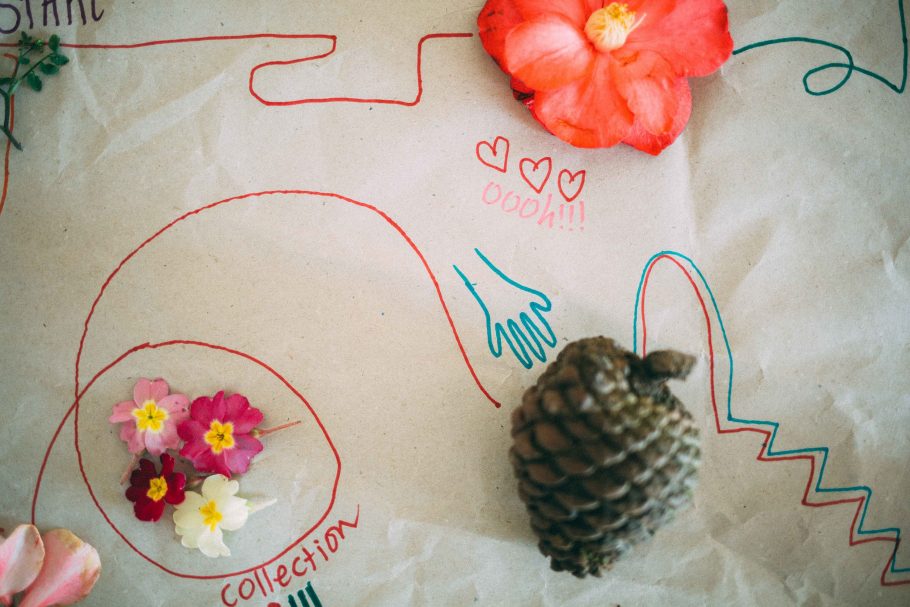
Experiences to find when you stop
- Touch, an interesting texture.
- Sound, be still and quiet, what can you hear? Record it, write it down,
imitate it. Or is there an object that makes a good sound you can collect? - See, what can you see? You may want to take a photograph or collect
something. Find something that is visually interesting. - Smell, collect a scent. If it is something that you cannot collect write it down
or remember it and pretend to place it into a bag. - Mess catcher, use your plastic bag to collect something a bit messy!
- Heart pleaser, something that captures your heart, something you come
across that you love. This may be an object, a view, something somebody
says, a story of the place. Photograph it, remember it, or collect it. - Collection, a collection of things in that space, could be sticks, leaves,
hills in the distance. Anything that there is more than one of. Collect them,
photograph, draw, or commit to memory.
After your journey
Once you have finished your journey find a place where you can be comfortable. This may be whilst you are out or back at home. You can now create a map of your journey. You can do this by getting a large piece of paper and drawing a line to show your journey. Then place the items you have collected onto it.
Remember each of the points and share what it was that you found interesting about the things you came across or collected. Or you can simply place the items in an order to show your journey. You may want to photograph this, so you can remember it in the future especially if you are going to leave the items behind or throw them away. Did you each collect something for each spot? Did the same things peak your interest? If you were to pick a favourite sensory item what would it be?
Extending the activity
- Use your collected items and turn them into a story, use the actual journey
you took to create a narrative journey. Make up a story that encompasses
your experiences, you could be the characters. - Do you remember? In the days following your journey why not see if you
can put your experiences in the correct order you found them. - Have the items changed since you found them?
- Sensory exploration. Take some time to fully explore each item you
collected. Spend a few minutes touching, smelling, looking at each thing
you collected and then when you are ready you can begin to talk about
it. What is it you like or dislike? Does it remind you of something? How did
you feel when you found it? - Draw the items you collected or turn them into a sculpture.
- Journey Mapping instructions pdf

